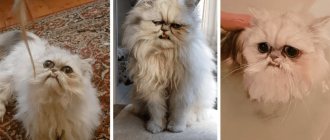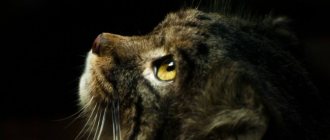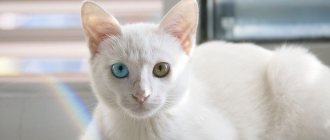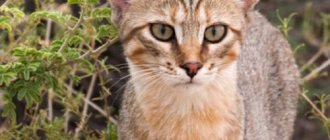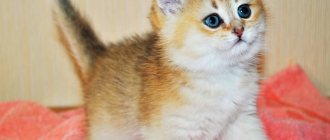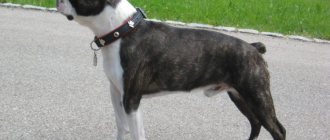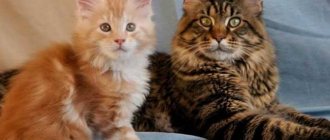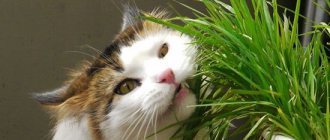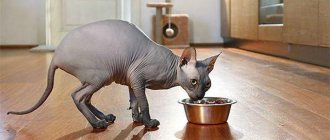Cat hybrids are animals obtained by crossing domestic cats with their wild relatives.
Hybrids are classified according to generations; the first generation is the result of direct crossing of a wild and domestic cat, which is designated F1. As a rule, in the first generation of hybrids all males are sterile, that is, they cannot produce offspring.
To develop a hybrid breed and overcome the sterility of males, hybrid females are brought together with domestic cats, this is how F2 generations are obtained; F3; F4. Naturally, over generations, the characteristics of the wild ancestor are partially lost.
Hybrids older than 4-6 generations are usually no longer considered hybrids. On their basis, a classic domestic cat breed can be formed, as happened with Bengals. In hybrid breeds, individuals of the 4th-6th generation, as a rule, are additionally infused with wild blood, and the process begins all over again.
In hybrid breeds, the cost of kittens depends on the generation of the hybrid. The smaller the generation, the more expensive the kittens are. At the same time, in recognized breeds, hybrids younger than the 4th generation are usually not allowed for exhibitions for safety reasons.
Savannah cat breed
Bristol cat
Kanaani cat
Caraquet cat
Safari cat
Chausie cat
Liger
This is the name given to a hybrid of a lion and a tigress. There are rumors that these pairs interbreed in the wild, but this has not been proven. But in captivity, such animals are bred deliberately. They grow very quickly, surpassing their ancestors on both sides.
For example, Hercules is a liger, the largest member of the cat family in the world. His weight exceeds 410 kg and he is not obese.
The largest hybrid breeds between wild and domestic cats
- Bengal cat
Dad is a Far Eastern cat (Prionailurus bengalensis lat.), which is often called a leopard for its skin covered with dark rosette spots and strokes over a light field. The size of an adult cat ranges from 65-70 cm to 1 m, depending on the species and habitat.
- Caraquet
Dad - Steppe lynx caracal (Caracal caracal lat.), which, as it turned out, in morphology is closer to the African serval than to the lynx. Length – from 90 to 115 cm, weight – 15-20 kg.
- Jaguarundi curl
Dad is a Jaguarundi (Puma yagouaroundi lat.), from the Puma genus. Height at withers – 25-35 cm, weight – from 5 to 9 kg. The unusually long, elongated and flexible body of the jaguarundi stands firmly on short, strong legs. The head is round, the muzzle is short, the nose is wide, the ears are small and round, like those of a bear. All these signs of paternity are easily discernible in his hybrid children-kittens + funny back-curved ears.
- Bristol
Dad - Margay or Long-tailed American cat (Leopardus wiedii or Felis wiedii lat.). The body length is 60-80 cm, and with the tail - all 120! The closest relative of the ocelot.
- Punyabi
Dad – Indian steppe cat (Felis silvestris ornata lat.) Length – up to 70 cm, weight – up to 6 kg
- Savannah
Dad is a real African Serval (Leptailurus serval lat.) Length – 100-140 cm, weight – 45-60 kg.
By the way, a real serval is perfectly tamed and, with proper upbringing of the cat and its owner, they get along quite well under the same roof.
- Chausie or Chausie
Dad is a wild cat House or Marsh Lynx (Felis chaus lat.). Length – 60-90 cm, weight up to 14 kg.
- Ussuriyskaya (Ussuri)
Dad - Amur leopard cat (Prionailurus bengalensis euptilurus lat.) - one of the subspecies of the Bengal wild cat.
- Kanaani or Canaani
Dad is a purebred wild Libyan dun cat (Felis silvestris libyca lat.) - this cat became one of the first representatives of the cat family who generously allowed a person to consider himself a pet. Another name for the Libyan cat is Nubian.
- Safari
Dad is Geoffroy's South American leopard cat (Leopardus geoffroyi or Oncifelis geoffroyi lat.). Length – 60 cm, with a tail – 90. Especially beautiful are safari kittens born from fully melanized dads – completely black, like a raven’s wing.
- Pixie bob
Dad is the North American Red Lynx (Lynx rufus lat.), which has the simple local name Forest bobcat. The forest bobcat is not the largest representative of the Lynx genus: weight - 8-11 kg, height - 35-40, length including a short tail - up to 1 m.
The first cat born from such a dad and most closely replicating his appearance was named Pixie - Elf. Forest, of course! When mating was repeated, stable characteristics of the breed were obtained, and the hybrids themselves were called Pixie-bob.
Of all the listed hybrids - a wild cat with a domestic cat - Savannah claims the palm in terms of size. Of course, with such and such a dad!
Female cats have no restrictions on the growth of embryos; each future kitten carries its father’s genes, which “tell” it how large it should grow, according to its father’s inclinations.
Indeed, the size of cats and male cats of this breed is very impressive: by the age of 3 they grow up to half a meter at the withers (males are known to be up to 65 cm!) and weigh from 12 to 15 kg! This is an impressive application, you will agree.
Savannah is the largest cat breed in the world, obtained by crossing a representative of wild fauna and a domestic cat.
Note that only cats of the first generation of hybrids - F1 - are so large in size.
Beefalo
This hybrid is the result of crossing wild bulls and American bison. By the way, they are bred for a very specific purpose (unlike most other hybrids) - to obtain good, selected beef.
Beefalos have been around since at least the 1800s. They are similar to both of their ancestors at the same time, but they are more similar to wild bulls.
Interesting! Due to the popularity of this crossbreeding, it is believed that only a few herds of wild bulls have “pure blood.” The rest have bison genes.
Safari (safari cat, criollo, aplausa)
Safari breed history: Safari is a hybrid of a domestic cat and a Geoffroy wild cat, a representative of the South American fauna. For the first time, such a hybrid was obtained in the 1970s at the University of Washington, where research was carried out on feline viral leukemia (for the same reason, Bengals appeared).
However, work on the safari at the university was soon stopped; there was information that it was continued by American felinologists, but today the fate of the breed is unknown. Most likely, due to genetic difficulties, the breed ceased to exist, but some individuals could remain with their owners.
Safari character: Safaris are independent, intelligent and affectionate, but can also exhibit wild traits.
Khaynak
They are also called “zo” in another way, and they are a cross between domestic cows and wild yaks. They are larger than their ancestors, and also produce more meat and milk. That is why they are widely bred, especially in Mongolia and Tibet.
Interesting! As with the beefalo, due to the popularity of such crosses, Tibetan and Mongolian cows and yaks are rarely “pure blood”.
Kanaani (Canaani, Canaan cat)
Kanaani breed history: The Kanaani breed was created in Jerusalem in the 90s. The famous sculptor of Russian-Israeli origin Doris Pollacek decided to create a cat breed similar to the wild ancestor of all domestic cats - the steppe (Libyan) cat. For this purpose, spotted Orientals, Bengals and the actual Libyan wild cats were used in the Kanaani breeding program.
Cats from the Pollachek cattery “Ha Jeruschalimi” were sold to catteries in the USA and Germany. It was in Germany that the breed standard was developed, which was adopted by the WCF in the early 2000s. Since 2008, the breed has been “closed”, that is, the infusion of both wild blood and crossing with cats of other breeds is prohibited.
The breed is named after Canaan, the historical name of the area where the state of Israel is now located.
Kaanaani Personality: Canaanis are active, affectionate, and love to hunt.
Caraquet (caracat)
Caracat breed history: The Caracat is a hybrid of a domestic cat and a caracal. The caracal was previously classified as a lynx, but recently it was separated into a separate genus due to genetic and morphological characteristics that bring it closer to both the puma and the serval.
In 1998, an accidental crossing of an ordinary domestic cat and a male serval occurred at the Moscow Zoo, resulting in the birth of the first caracat. However, the kitten did not fall into the hands of felinologists and was not used in breeding work.
In the United States, at the beginning of the 2000s, two respected and authoritative breeders, Joy Gesinger and Alisson Navarro, were involved in breeding caraquets. It was thanks to Joy that the caraquetas received experimental status in TICA. However, Gesinger died in 2014, and Navarro stopped her work on the breed around the same time for unknown reasons.
However, in 2014, the baton was intercepted by the Russian cattery Cataleya; its owner Irina Nazarova positions herself as the creator of the breed, claiming that she independently obtained the F1 caraquet. However, in 2015, regardless of Nazrova, caraketas were obtained in Kyiv by savannah breeders Anna Kuzmina.
It is unknown which domestic cats Nazarova used in her work, while in nurseries in the USA and Ukraine matings with the Serengeti and Abyssinians were used.
Thanks to Nazarova’s efforts, the breed received experimental status in the ICU.
The name Caracat comes from the merger of the English names of its ancestors: caracal+cat.
Caraquet character: Caraquets are friendly, affectionate and loyal to their owner. However, hybrids of the first generations can retain wild traits: aggression and secrecy.
Hybrids of Lion and Tiger
The individuals that are produced by crossing between Leos and Tigers are known as Ligers and Tigons. The second generation of Liger and Tigon hybrids is Liligr and Litigon.
- The liger (Panthera leo, crossed with tigris) is a hybrid of a female Tiger and a male Lion.
- The Tigon (Panthera tigris, crossed cleo), also known as Tiglon, is the offspring of a male Tiger (Panthera tigris) and a female Lion (Panthera leo). Tigons look like smaller versions of Ligers.
The early record Lion-Tiger hybrids were mostly Tigons, so in the book At Home at the Zoo (1961), Gerald Eales wrote: “For the record, I should say that I have never seen a Liger, a hybrid obtained by crossing a Lion with a Tigress. They seem even rarer than Tigers."
Ligers
These offspring of Lion and Tigress fathers are much larger than their parents, since the male in this pair has a growth gene and inhibits the female, unlike the lioness.
Tigons
The descendants of Tiger and Lioness fathers are now not as common and popular as Ligers, although the opposite was true in the 19th and 20th centuries. Tigons are smaller than their parents.
Tigon
Liligers
These are the descendants of Lviv and Ligres. In September 2012, a baby Liliger named Kiara was born at the Novosibirsk Zoo in Russia.
Liliger
Litigons
Litigon is a rare second generation, the offspring of a female Tigon and a Leo. Rudrani, a Tigonessa from the Alipore Zoo in Kolkata in India, was raised with Debabrata, a male Asiatic Lion (later genetically established as a cross between the African and Asiatic lion subspecies), and they gave birth to three Litigons in 1971. The first cub was a girl, but only one boy, Cubanacan, survived.
Litigon
Sizes of Lions and Tigers hydrides
As a rule, the size of the Liger is larger and the animal itself is heavier than any of the felines existing today.
Some biologists believe that the Liger's large size or "gigantism" is a result of the absence of certain genes that limit the animal's growth. A male Leo's genes tend to maximize the growth of his offspring, as this represents greater competitiveness for the males. To control the size of the offspring within a certain range, the Lioness gene compensates for the male's growth-maximizing gene. The female Tiger's genes, however, are not designed to limit growth, allowing Ligers to grow extremely large, much larger and heavier than their parent species.
Lion, Liger and Tiger
Typically, most Ligers reach sizes of over 3.3 meters. According to Guinness World Records (until 2013), the largest feline specimen was the male Ligra Hercules from Myrtle Beach Safari, a reserve in South Carolina in the USA. He reached 3.33 m, had a height of 1.25 m at the withers and weighed 418.2 kg. Hercules ate about 13.6 kg of meat per day and drank several liters of water.
Liger
Tigons also have growth dysplasia, but the opposite is true. They are smaller than the parent species and weigh less than 150 kg. Tigon is about half the weight of Liger.
Appearance and physiology of Ligers and Tigons
These hybrid cats are similar to their parents, only larger or smaller. They have huge teeth about four centimeters long. Their genes include genetic components of Tigers and Leos, so they can look very similar to their parents and can be difficult to identify. Coloration ranges from gold to brown or white, and they may or may not have spots or stripes. An adult male Liger usually has a smaller mane than a male Lion.
Ligressa Shasta was born at the Hogle Zoo in Salt Lake City in 1948 and died in 1972. She lived for 24 years. A liger named Samson died at the age of 13 in 2006. However, the average life expectancy of Ligers is not very long. Male Tigons usually live no more than 10 years.
Ligress Zita from the Novosibirsk Zoo
Male Ligers and Tigons are considered invariably sterile, meaning they cannot have offspring.
The first second generation hybrid (which was a child of Liger) was discovered at the Munich-Hellabrunn Zoo in 1943. His birth proved that biologists' knowledge of Tigons and Ligers was incorrect. Scientists now believe that only male hybrids are always infertile, while female hybrids can give birth to cubs, like other animals of the Panther genus.
Ligress Zita from the Novosibirsk Zoo
By 2021, it was believed that there were over a hundred Ligers in the world, but only a few Tigons as they were harder to obtain. Moreover, Ligers are more likely to attract tourists to zoos. Some zoos argue that they breed Ligers or Tigons to preserve these hybrids, but their opponents say there is no point in preserving a species that does not exist in the wild.
The largest Liger in the world named Hercules
In 2006, a liger named Hercules, born in 2002 at the Institute of Endangered and Rare Species (TIGERS) in Miami, Florida, was registered in the Guinness Book of Records as the largest representative of the feline living on Earth today. If you stand Hercules on his hind legs, his height is 3.7 meters. He weighs more than 400 kg, but is not obese and is active. Today he is fine and he turned 18!
Proper nutrition for hybrid cats
It is also necessary to properly care for and maintain a hybrid cat. In addition, this problem in hybrid cats, whose direct ancestors are wild animals, places greater demands on the owner than in the case of feeding domestic cats. Many hybrid owners say that their pets cannot digest the prepared cat food available in the market, so they decide to feed them raw meat (BARF).
The BARF diet requires the owner to have a good understanding of the nutrients that must be supplied through food. If this is too difficult, you can choose high-quality food with a high content of meat (rich in animal proteins), as well as vegetables, fruits and natural oils.
The proportion of grains in the food should be as small as possible due to the tendency of cats' stomachs to indigestion - in this case it is better to completely abandon grains. Free-roaming hybrids often complete their daily menu on their own, eating mice and small birds that they hunt.
Who is a hybrid cat breed suitable for?
Without a doubt, hybrid cats are definitely beautiful creatures, but you should not buy them just for admiration. Before buying, be sure to find out everything about the character and needs of an exotic kitten and make sure that all its requirements can be met.
If the pet can have enough space to move around, occupy most of the owner’s attention, and the owner, in turn, has carefully studied the information before getting the animal - everything about feeding and caring for a demanding cat, as well as its upbringing - in this case, you can get a hybrid.
Hybrids are perfect for those who have a lot of free time, an active lifestyle and enough finances to maintain a pet. Also, a spacious house or large apartment will be another plus for acquiring a friend in the family.
